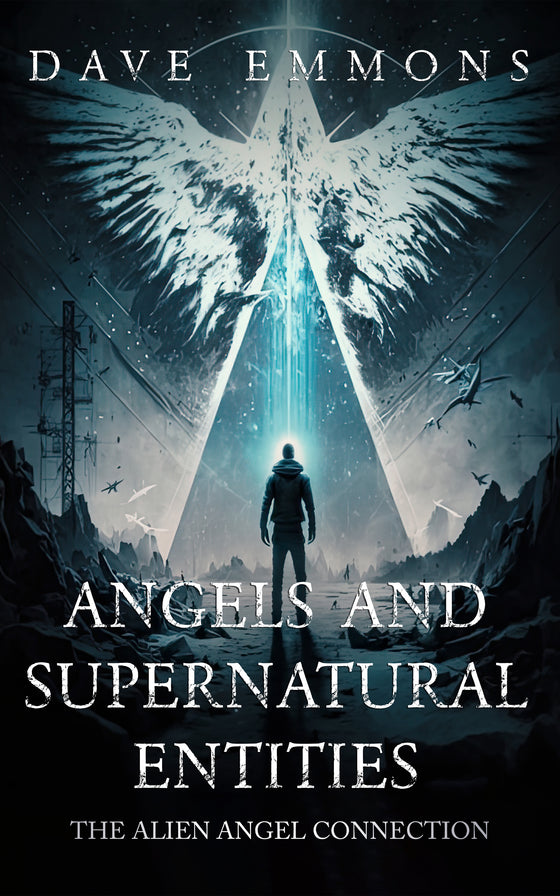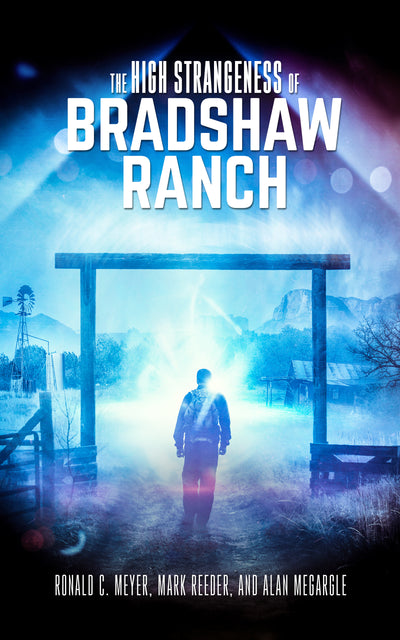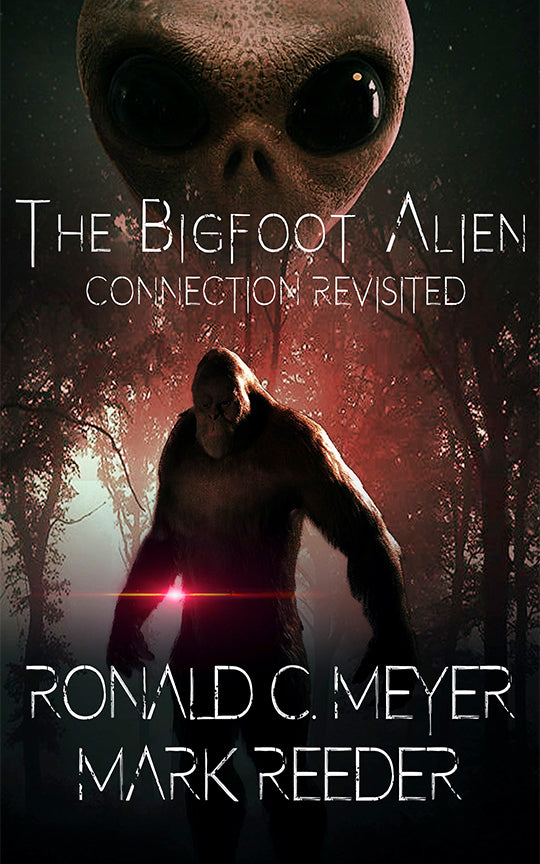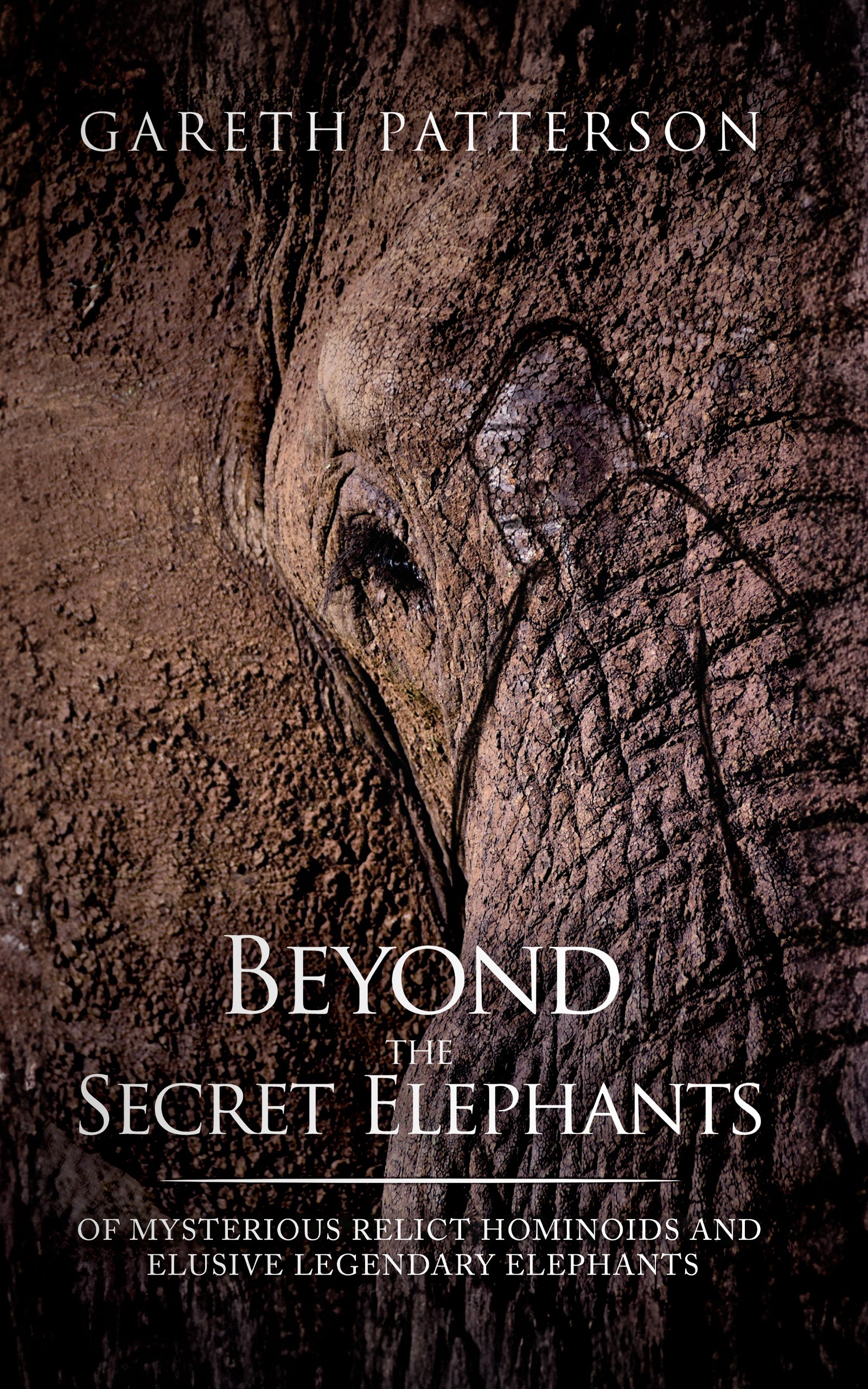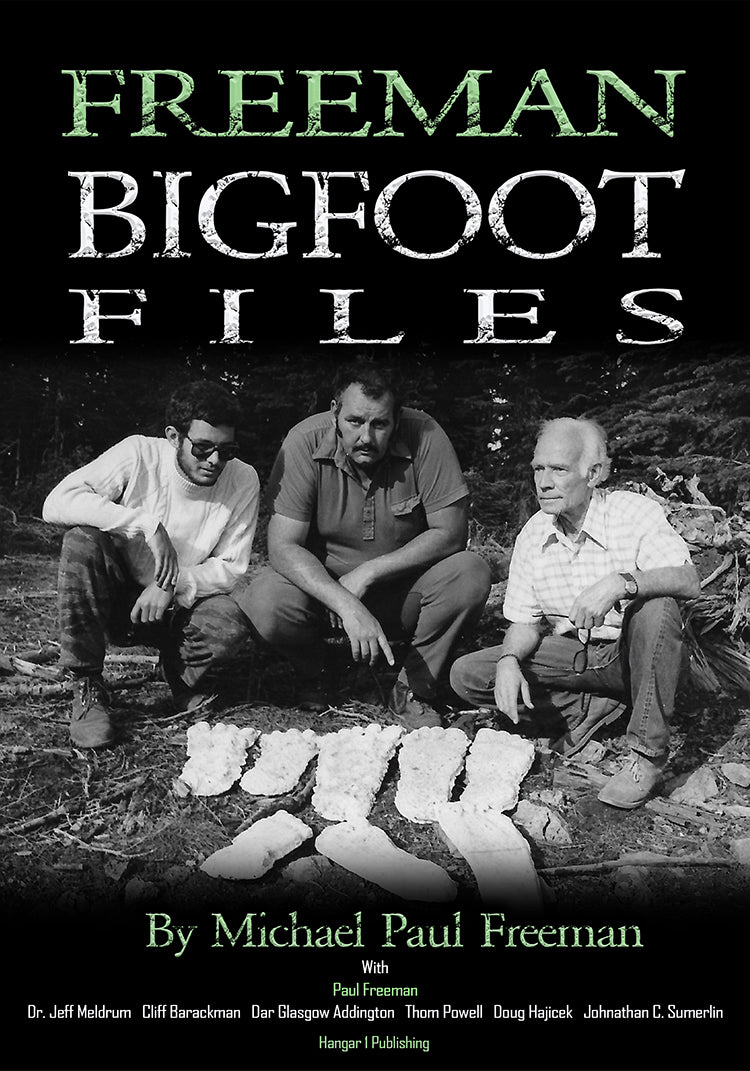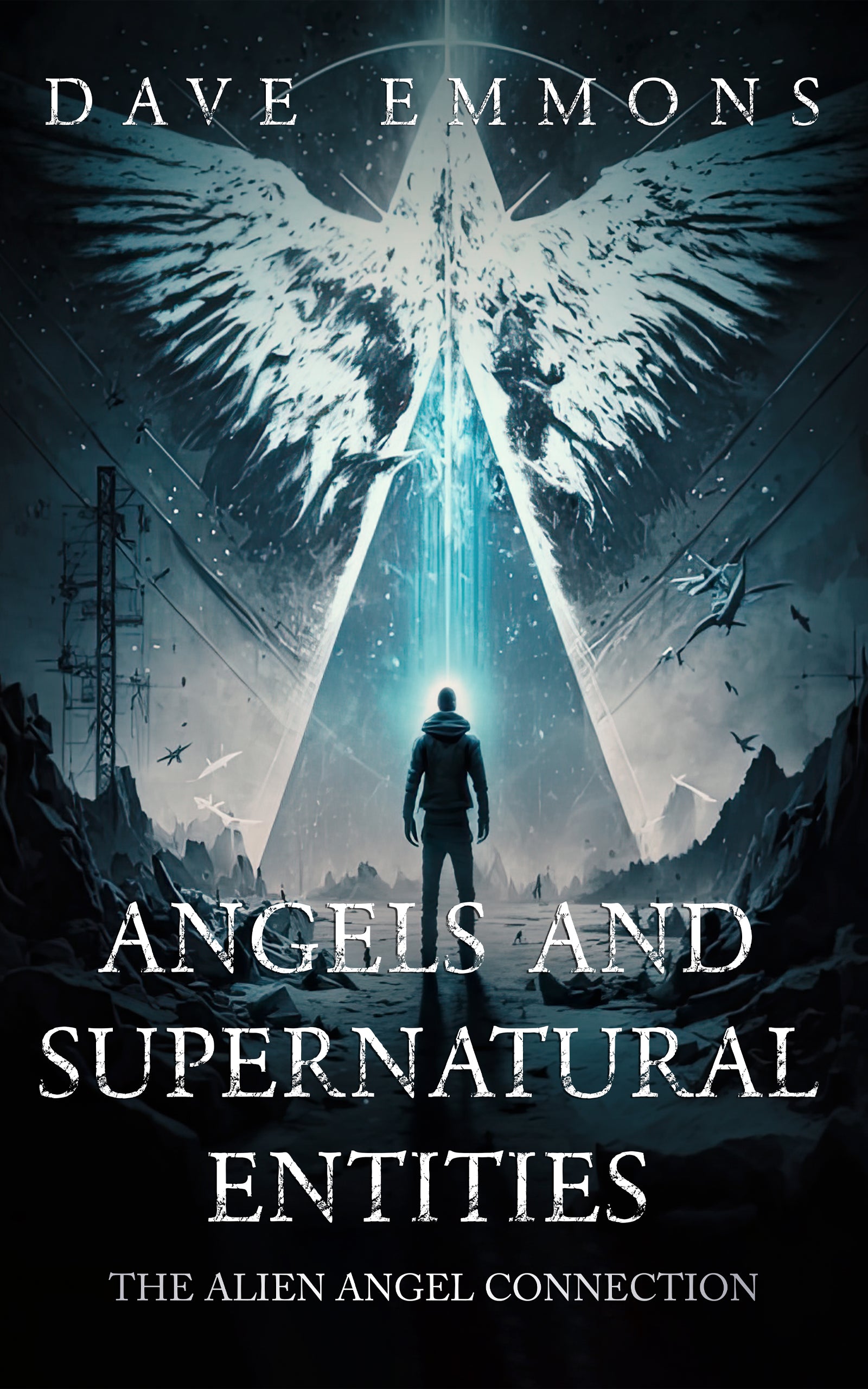Giants on Earth (Nephilim): Mystery and Meaning

By Howard Callahan, Ufologist
Few passages in the Bible capture the imagination quite like Genesis 6:4. In these cryptic lines, we encounter beings called Nephilim-mysterious figures that have puzzled scholars and fascinated readers for millennia:
"The Nephilim were on the earth in those days-and also afterward-when the sons of God came in to the daughters of men and they bore children to them. These were the mighty men who were of old, the men of renown."
In just one verse, an ancient world unfolds before us-a world where something extraordinary and troubling was happening, something so significant it preceded the greatest catastrophe in biblical history: the Flood. But who exactly were these Nephilim? Were they simply very tall humans, or something more supernatural? And what connection might they have to famous biblical figures like Goliath?
The story of the Nephilim isn't just about impressive height. It's about boundaries crossed, cosmic rebellion, divine judgment, and perhaps even the ongoing battle between good and evil that runs through biblical narrative.
Unpacking Genesis 6:4: A Verse Loaded With Mystery
Genesis 6:4 might be short, but every phrase carries weight. Let's break it down piece by piece.
"The Nephilim were on the earth in those days..." The text places these beings in the pre-Flood world, a time of increasing wickedness. Their appearance coincides with humanity's moral decline, suggesting a connection between their presence and the corruption that grieved God's heart.
"...and also afterward..." This phrase stops many readers in their tracks. If the Nephilim existed before the Flood that supposedly wiped out all life except Noah's family, how could they exist "afterward"? This simple phrase creates one of the Bible's most persistent puzzles.
"...when the sons of God came in to the daughters of men and they bore children to them." Here lies the origin story-these Nephilim resulted from unions between mysterious "sons of God" and human women. The identity of these "sons of God" stands at the center of Nephilim debates.
"These were the mighty men who were of old, the men of renown." The offspring weren't ordinary. They became legendary figures-powerful, famous, or infamous. The Hebrew term for "mighty men" is gibborim, suggesting exceptional strength or warrior status.
But what does "Nephilim" itself mean? The Hebrew word connects to the root npl, typically meaning "to fall" or "fallen ones." Some scholars suggest it could mean "those who cause others to fall"-essentially, tyrants or bullies. When ancient scholars translated the Hebrew Bible into Greek (the Septuagint), they chose the word gigantes ("giants"), cementing the association with large stature in popular understanding.
This translation choice has shaped our perception ever since, though the original Hebrew potentially carries meanings beyond mere physical size-perhaps moral fallenness or tyrannical character. The Nephilim may have been physically imposing and spiritually corrupt.
The Mysterious Parents: Who Were the "Sons of God"?
The most heated debate surrounding the Nephilim concerns their parentage. Who were these "sons of God" who fathered them with human women? Three main interpretations have emerged over centuries:
The Fallen Angel Theory
This view-likely the oldest interpretation and gaining renewed scholarly support-identifies the "sons of God" as angelic beings who rebelled against God's established order. Several biblical passages use this exact phrase (bene elohim) to refer to angels, particularly in Job 1:6, 2:1, and 38:7, where the "sons of God" present themselves before the Lord in heaven.
The most common objection cites Jesus's statement that angels "neither marry nor are given in marriage" (Matthew 22:30). However, proponents note this describes angels in heaven fulfilling their proper roles-not rebellious angels acting against divine intent. The Bible clearly shows angels can take physical form (Genesis 18-19, where angels eat with Abraham and are later targeted for sexual assault in Sodom).
The New Testament may reference this incident in Jude 6-7, which describes angels who "did not keep their own domain but abandoned their proper abode," linking their sin to the sexual immorality of Sodom and Gomorrah by saying both involved going after "strange flesh."
This interpretation explains why the offspring were exceptional-they weren't fully human but hybrid beings with supernatural parentage. It also explains the severe judgment of the Flood, as this boundary-crossing represented a profound cosmic rebellion and threatened to corrupt the human bloodline completely.
Ancient Jewish texts like the Book of Enoch (not in the biblical canon but influential in Second Temple Judaism) elaborate extensively on this interpretation, describing "Watchers" (angels) who lusted after human women, descended to earth, took wives, and produced giant offspring who committed violence and wickedness.
The Sethite Line Theory
This interpretation, favored by many traditional theologians including Augustine, argues that the "sons of God" were the godly descendants of Seth (Adam's third son, born after Abel's murder), while the "daughters of men" were women from Cain's corrupt lineage.
Proponents note that Seth's line follows Adam, who was made in God's image, making Seth's descendants figuratively "sons of God." Genesis 4-5 contrasts Cain's ungodly lineage with Seth's righteous line, culminating in Noah, who "found favor in the eyes of the Lord" (Genesis 6:8).
This view sees the sin as righteous people compromising with wickedness through unequal marriages, similar to later biblical warnings against marrying unbelievers (Deuteronomy 7:3-4; 2 Corinthians 6:14). The resulting corruption infected even the previously godly line, necessitating divine intervention through the Flood.
Critics point out this doesn't readily explain why the offspring were "mighty men" or how this mixing would produce people of unusual stature or strength.
The Royal Dynasty Theory
The third interpretation suggests the "sons of God" were powerful rulers or kings who, claiming divine right or status, took any women they desired. The offspring became renowned warrior-kings whose reputations spread widely.
This view draws on ancient Near Eastern concepts where kings claimed divine parentage or status. The "mighty men" (gibborim) and "men of renown" could refer to these royal dynasties and their military exploits.
While this interpretation aligns with historical power dynamics, it lacks strong biblical support for understanding "sons of God" this way in this particular context.
Regardless of which interpretation we find most compelling, Genesis clearly connects these unions to escalating wickedness that prompted divine judgment. The moral decline wasn't just about human sin but potentially involved cosmic boundaries being crossed, leading to a corruption so severe only a global reset could address it.
Giants After the Great Flood: An Ongoing Mystery
The phrase "and also afterward" in Genesis 6:4 presents a genuine puzzle. If the Flood destroyed all life except Noah's family, how could Nephilim exist afterward?
Several theories attempt to address this conundrum:
- The reoccurrence theory suggests that after the Flood, fallen angels again mated with human women, creating a new generation of giants. The Hebrew construction in Genesis 6:4 could be understood as "whenever the sons of God came in to the daughters of men," implying a repeating pattern.
- The genetic transmission theory proposes that the wives of Noah's sons might have carried Nephilim genes, allowing giant traits to reemerge in later generations. Critics note this contradicts the biblical emphasis on Noah's family being set apart and preserved specifically because of their righteousness and genetic purity.
- The regional flood theory suggests the Flood might not have covered the entire globe, allowing some Nephilim to survive elsewhere. This remains a minority view given biblical language about all flesh being destroyed.
- The terminology theory proposes that "Nephilim" became a general term used for any unusually large or mighty people, rather than indicating direct descent from the pre-Flood beings.
Whatever the explanation, the Bible clearly describes giant-like figures after the Flood, most notably when the Israelites prepared to enter the Promised Land. In Numbers 13:33, the spies sent to explore Canaan reported: "We saw the Nephilim there (the descendants of Anak come from the Nephilim). We seemed like grasshoppers in our own eyes, and we looked the same to them."
This passage explicitly connects the Anakim (a tribe known for their unusual height) with the pre-Flood Nephilim. While some suggest the spies exaggerated out of fear, Moses himself later confirmed that the Anakim were "a people great and tall" (Deuteronomy 9:2).
The Anakim weren't the only giants mentioned. The Rephaim were another group described as being "as tall as the Anakim" (Deuteronomy 2:11, 21). Among them was Og, king of Bashan, whose iron bed measured approximately 13 feet long (Deuteronomy 3:11), suggesting he was of extraordinary size even among his people.
These post-Flood giants became a significant obstacle in Israel's conquest of Canaan. Joshua later drove out the Anakim from most of the hill country, although some remained in Gaza, Gath, and Ashdod-Philistine cities (Joshua 11:21-22). This seemingly minor detail sets the stage for one of the Bible's most famous giant encounters.
Goliath: The Last Stand of the Giants
When a young shepherd named David faced the Philistine champion Goliath, he wasn't just confronting an intimidating warrior-he was potentially facing the last significant descendant of an ancient lineage that stretched back to the mysterious Nephilim.
Goliath came from Gath (1 Samuel 17:4), one of the three cities where Joshua had left some Anakim. Given the biblical connections between the Anakim and the Nephilim, some scholars suggest Goliath represented the culmination of this giant bloodline.
His physical description reinforces this connection. The Masoretic Text describes Goliath as "six cubits and a span" tall (approximately 9'9"), though some earlier manuscripts like the Septuagint and Dead Sea Scrolls list him at "four cubits and a span" (around 6'9"). Even at the lower height, Goliath would have towered over the average person in that era, estimated to be around 5'5".
Intriguingly, 1 Samuel 17:51 calls Goliath a gibbor (mighty man)-the same term used for the offspring of the "sons of God" and "daughters of men" in Genesis 6:4. His armor includes "scale mail" (1 Samuel 17:5), which some scholars connect symbolically to the serpent, potentially linking Goliath to the "seed of the serpent" mentioned in Genesis 3:15.
David's victory over Goliath thus carries deeper significance than just an underdog triumph. If Goliath represented the remnant of the corrupting Nephilim lineage, David's victory symbolizes the promised "seed of the woman" defeating the "seed of the serpent." It completes the unfinished conquest, as David removes the giant threat that even Joshua had left partially intact.
This wasn't the end of biblical giants. 2 Samuel 21:15-22 records David's men killing four more giants from Gath, described as "descendants of the giants" (Hebrew: Rapha). These victories effectively ended the threat of giants in biblical narrative-the last echo of those mysterious pre-Flood beings finally silenced.
Beyond the Bible: The Book of Enoch's Expanded Narrative
Though not included in most biblical canons, the Book of Enoch provided ancient Jews and early Christians with a much more detailed account of the Nephilim. Found among the Dead Sea Scrolls and referenced in the New Testament book of Jude, this text significantly influenced early understanding of Genesis 6.
Enoch describes "Watchers," angels assigned to observe humanity, who became enamored with human women. Led by Semyaza, two hundred of these beings descended to Earth, took human form, married women, and taught humans forbidden knowledge including weapon-making, cosmetics, sorcery, and astronomy.
Their offspring-the Nephilim-grew to enormous size (though specific heights in various manuscripts differ dramatically), consumed vast resources, and eventually turned to cannibalism and violence against humans. This wickedness, combined with the forbidden knowledge the Watchers imparted, corrupted human society beyond repair.
According to Enoch, God sent the archangels to bind these rebellious Watchers in darkness until the final judgment and to eliminate their giant offspring through the Flood. However, the most fascinating element of Enoch's account concerns what happened to the spirits of these deceased Nephilim.
Enoch claims that because of their hybrid nature-part divine, part human-the spirits of the dead Nephilim could neither enter heaven nor hell. Instead, they remained on earth as disembodied entities seeking to possess human bodies. This tradition potentially connects the pre-Flood Nephilim with the demons encountered in the New Testament, explaining their origin as the spirits of long-dead giants rather than fallen angels themselves.
While we must approach non-canonical texts cautiously, Enoch's account demonstrates how ancient Jewish interpreters understood Genesis 6-not as a simple intermarriage between human bloodlines, but as a cosmic rebellion with far-reaching consequences.
Modern Questions About Ancient Giants
The Nephilim continue to spark questions and debate. Here are some of the most common inquiries:
- How tall were the Nephilim really? The Bible doesn't specify their height. Estimates for later giants like Goliath range from about 6'9" to 9'9" depending on manuscript traditions and cubit measurements. King Og's bed suggests even larger possibilities.
- What distinguishes Nephilim from other biblical giants? The Nephilim were specifically the pre-Flood giants mentioned in Genesis 6:4, while terms like Anakim, Rephaim, Emim, and Zamzummim refer to post-Flood giant clans. Numbers 13:33 suggests the Anakim descended from the Nephilim, creating a potential lineage connection.
- Were Nephilim fallen angels? No, the Nephilim were the offspring of the "sons of God" (possibly fallen angels) and human women, not the fallen angels themselves.
- How did giants survive the Flood? This remains debated. Possibilities include recurring angel-human unions, genetic transmission through Noah's daughters-in-law, or the term "Nephilim" becoming a general description for later extraordinary humans.
- Was Goliath a Nephilim? Not directly, but he may have been a distant descendant of the Anakim, who were connected to the Nephilim in Numbers 13:33. This potentially links him to that ancient lineage.
- Are there Nephilim descendants today? The Bible indicates David and his men eliminated the last known giant clans (2 Samuel 21:15-22). Claims of modern Nephilim descendants lack biblical support.
- What's the significance of the Nephilim story? Beyond historical curiosity, this narrative illustrates the consequences of cosmic rebellion, the corruption that precedes divine judgment, and the ultimate triumph of righteousness over wickedness.
Modern archaeological investigations have sought physical evidence of biblical giants. Some point to Gilgal Refaim (Wheel of the Giants), an enigmatic ancient stone formation in the Golan Heights that local traditions connect to the burial of giant king Og. Reports of unusually large human skeletal remains periodically surface, though most lack scientific verification.
While physical proof may remain elusive, the theological and narrative significance of the Nephilim endures. They stand at a critical juncture in biblical history-the moment when corruption reached such extremes that divine intervention became necessary. Their reappearance after the Flood and eventual defeat by figures like Joshua, Caleb, and David maps the gradual triumph of God's order over chaos.
The Nephilim remind us that the Bible's worldview includes dimensions beyond the physical-realms where boundaries between heaven and earth can be crossed, sometimes with catastrophic results. Whether we interpret them as literal giants born of supernatural unions or as symbols of tyrannical power and moral corruption, they represent the extraordinary depths of rebellion that preceded extraordinary judgment.
Perhaps the most compelling aspect of the Nephilim narrative is its deliberate ambiguity. Genesis gives us just enough information to recognize their significance while leaving enough questions to prompt continued exploration. This has fostered centuries of interpretation and reinterpretation, keeping the ancient story alive in our collective imagination.
The giants may be gone, but their shadow stretches across biblical narrative from Eden to Canaan to the spiritual warfare of the New Testament-a persistent reminder that the battle between the seed of the woman and the seed of the serpent plays out across history in ways both seen and unseen.
From Bigfoot to UFOs: Hangar 1 Publishing Has You Covered!
Explore Untold Stories: Venture into the world of UFOs, cryptids, Bigfoot, and beyond. Every story is a journey into the extraordinary.
Immersive Book Technology: Experience real videos, sights, and sounds within our books. Its not just reading; its an adventure.








